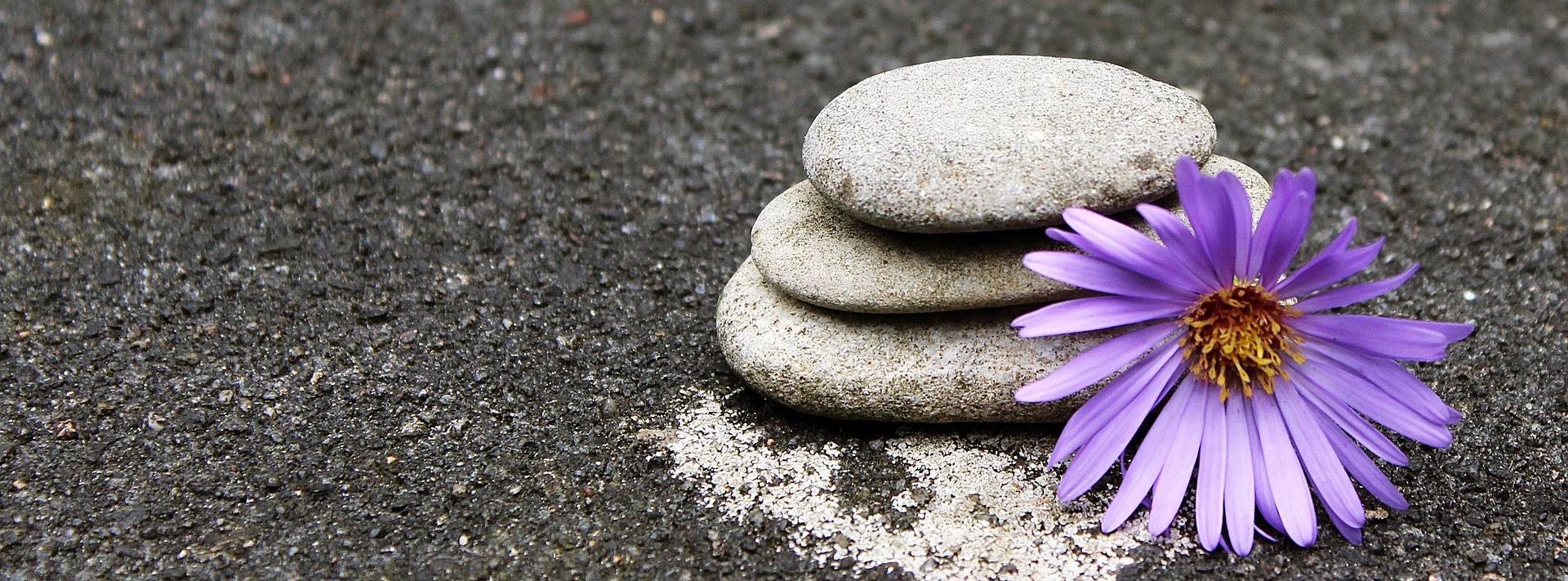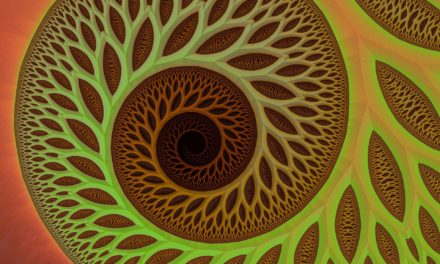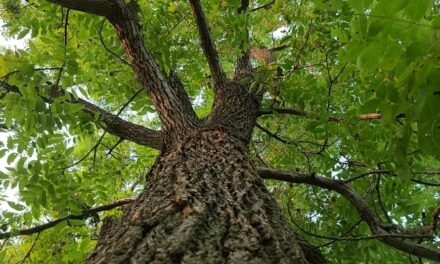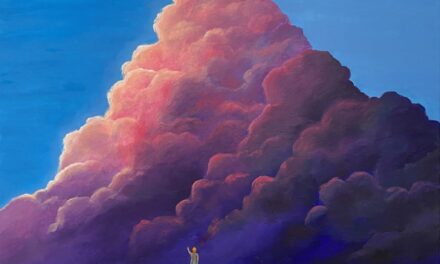Let the mysteries unfold. Carol Vaccariello follows Spirit in the most inconceivable ways. Her unique journey reflects a beautifully braided life.
The life of Reverend Dr. Carol Vaccariello has been a journey guided by Spirit, woven together to create a strong braid made up of different and sometimes surprising elements. She currently considers herself a “braided” person, who sees the validity and unique contributions of all spiritual traditions. Her journey to this braided approach of spiritual practice is a story of following her spiritual call and being open to this call in all the unanticipated ways it spoke to her heart and influenced her choices.
A woman of Italian heritage, raised in Roman Catholic churches and schools, Carol Vaccariello felt the pull to spiritual leadership in childhood. Despite the gender restrictions of the Roman Catholic church, she knew from a young age that she wanted to be a priest.

Werstler
“When I was in the third grade, I was in Saint Margaret Mary’s grade school in Cleveland,” explains Carol. “We used to have missionary priests that would come in at different times of the year, usually during the church season of Lent or Advent, and they would teach us. I remember it was a really cold day. During our recess, [the priest] came out in the playground, and there was a whole bunch of us little kids huddled around him, because he was a really nice guy. I remember looking up at him, and I said, ‘Father, someday I am going to be a priest – just like you.’” On that cold day, this is how the episode played out:
“Oh no honey,” the priest said. “You can’t do that.”
Carol replied, “Yeah, I’m going to be a priest – just like you.”
“Oh honey,” He repeated. “You can’t do that. But you can be a sister.”
In the schoolyard, as she breathed in the frosty air, Carol turned around, gritted her teeth, stomped her foot and said, ‘No, I’m going to be a priest! Just like you!”
This exchange, however brief, become a pivotal moment in Carol’s life. Another strand strengthening the braid that has guided her life’s journey.
“As young as I was, I remember feeling this energetic sword go right through my heart, and I’ll never forget it,” she says. “That 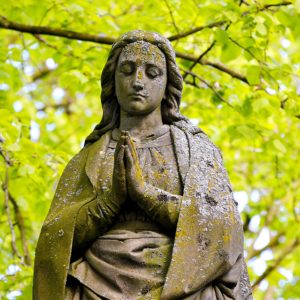
was the first time that I knew what I knew – I was going to be a priest. I just knew it. But I was still too young to understand how the Catholic church felt about this; I couldn’t understand why this priest was telling me I couldn’t. I knew I didn’t really want to be a sister, but that’s exactly what happened, right? I didn’t know what else to do, but I knew I had to do something, so I ended up in the convent.”
Carol found herself in Villa Maria, Pennsylvania, where she joined the Sisters of the Humility of Mary nicknamed the Blue Nuns because of their blue habit. It was with this group of women that Carol learned the deep prayer of the heart. While she was there, Carol lived in the Motherhouse, which is where the nuns’ main body of authoritative power lives. It’s where the infirm and old nuns are cared for and the new nuns get their formation; the beginning and end of their journeys start at the Motherhouse.
“It’s like the mother ship,” Carol elaborates. “And then there’s all these little convents where nuns get assigned to do the work, but they always come home to the motherhouse.”
The Motherhouse for the Blue Nuns was located on a farm, and Carol helped take care of 13,000 laying hens, taking boxes and boxes of eggs to Peterson’s Poultry in New Castle, PA.
“This was a wonderful opportunity because during that time I was developing a deep spiritual bond with Earth,” Carol recalls. “I remember one of the first songs I ever wrote was, ‘Oh to be close to the Earth, oh to be chosen to care for the land, and care for the gifts that God’s given to man. Oh to be close to the Earth.’”
Although her experience with the Blue Nuns was fulfilling in many respects, it was clear that this was not where she needed to be. There was something else beyond the reach of the Motherhouse, the convent and the Blue Nuns, that Carol was missing.
“They’re a beautiful group of women. I loved being there, and I wouldn’t change it, ever, because of what I learned and the depth of spirituality they anchored in me. I would never give up that opportunity. But after a few years, I knew I was in the wrong place; I just didn’t know what to do. When I look back, I can see the plan of the universe. Even though I don’t understand it, I knew it was sacred, and I knew in my heart that my whole life would be about whatever that is. And that’s another thing about this – you don’t have to understand anything. You just have to keep moving in the direction that you’re called.”
Calling upon the courage to leave what was safe, what was familiar is one of the incredible feats of Carol’s life.
“The Mother Superior didn’t want me to go,” explains Carol. “So I walked out. Talk about tough. But I had to, because when Spirit calls you to do something, you do it. I simply cannot let someone tell me how to live my life when I know for sure that Spirit’s calling me to do something else.”
This calling continued to guide her along the path of her life. After leaving the convent, she returned to her passion for sacred music and led choirs, playing organ and guitar at various churches. However, the desire to be a priest still burned inside her.
One day, she was asked to be a substitute for a church’s regular musician. Carol was an experienced musician and earned her first degree in Sacred Music. Although she normally played the organ, this time she was playing the guitar. Her eyes were closed. She was singing a solo in front of the entire congregation.
 “I was singing and then it got so quiet,” Carol says, nearly whispering. “You could’ve heard a pin drop on the carpeting. And I thought, ‘Is everybody still here?’ So I opened my eyes and they were all there. Then my knees got shaky. As soon as I finished singing the song, I sat down because I was trembling. Then this brand new pastor, I didn’t even know his name, he goes up to the podium, he looks at me and says, ‘Carol…when you sing, the spirit stirs.’ You see, I knew something happened in the room that day, but I didn’t understand it. This had never happened before.”
“I was singing and then it got so quiet,” Carol says, nearly whispering. “You could’ve heard a pin drop on the carpeting. And I thought, ‘Is everybody still here?’ So I opened my eyes and they were all there. Then my knees got shaky. As soon as I finished singing the song, I sat down because I was trembling. Then this brand new pastor, I didn’t even know his name, he goes up to the podium, he looks at me and says, ‘Carol…when you sing, the spirit stirs.’ You see, I knew something happened in the room that day, but I didn’t understand it. This had never happened before.”
During the following week, Ken Hayes, the new pastor, asked Carol to come see him. When she came to his office, he asked, “What are you doing about your calling?”
“You don’t know me,” Carol replied. “How do you know I have a calling?”
“I know you have a calling. What are you doing about it?” Ken continued, “Our denomination ordains women. So think about it. If you want to, I’ll mentor you, and we’ll get you ordained.”
So she did.
“This is the story of my life, all of these little things that keep happening,” Carol reflects. “But they’re not little, they’re really huge. It was amazing, because it was a matter of a few months. I had to go before what they called the Commission on Ministry, which is a group of six pastors from all different churches. So when I’m in there, this crazy thing started happening. They’d ask me a question, and all of a sudden I realized I had two minds: one that was Roman Catholic, and one that was emerging Protestant. Every time they’d ask me a question, I’d hear two answers. And the commission would say, ‘What are you doing? What are you doing in your head?’”
In retrospect Carol explains, “Well, you have to understand who I was at that time. I hadn’t had a chance to integrate all of this yet, and so my Roman Catholic head comes up, and then my almost Protestant head comes up, and they struggled with each other.”
However, the Commission on the Ministry was accepting of Carol’s transition, her struggle. More than that, they were able to see that she was willing to fight through the struggle. They accepted her. In less then a year, she was ordained.
But the braid does not end here.
“I still had so much I wanted to learn,” Carol explains. “I had worked at a Methodist church as the Director of Music, and their pastor – his name was Dick Yausey – encouraged me to look into a Doctor of Ministry program in Michigan. So I went up there, and they took me right in, and I earned my Doctor of Ministry in Dreamwork as a Spiritual Practice. The reason I did that was because from the time I was quite little, I couldn’t remember my dreams. So I took a whole doctoral program in dreams, trying to get myself hooked back up with my dream world. It’s really a fascinating study because you really learn things like trance work and hypnotherapy, how to help people with their dreams, the language of dreams, and how each person has their own dream language. I learned that my job as a dream worker isn’t to be an interpreter; it’s to help each person learn their own dream language.
“I was using all these parts of myself that I didn’t really know, but now understand better. It was very hypnotic, it was very otherworldly and spirit-filled, and so I was getting to learn all that stuff even though I didn’t know why I was being called to it. This is how Spirit works – we don’t have to know everything. Spirit will make sure we know what we need to know. All we have to do is say yes. Even when you’re not ready, just say yes. Because if you don’t say yes, then the very thing you probably needed to learn, you just missed, and you might get a second go, but not always. I think part of living in Spirit is being willing to live past the edge.”
Before Carol even finished her doctorate, the school hired her to be the director of the program.
“At the school, some really important things happened. It’s where I learned about the LGBTQ community. It’s where I started taking a stand, because up until then I hadn’t been asked to, and now I had to,” Carol states.
Carol’s life continued to braid new ways of experiencing Spirit, and she continued to integrate more faith traditions and approaches to spirituality. In 1997 a friendship with Matthew Fox led to the invitation to become a part of the University for Creation Spirituality. Carol was brought in to co-direct the Doctor of Ministry Program and also to complement Dr. Fox’s priest energy with her priestess energy for the monthly Cosmic Mass rituals. Carol was an administrator and faculty member and confidant, a ritual leader and student advisor. When she was consecrated as Bishop in the Independent Catholic tradition, she demanded that instead of the Bible, they use Matthew Fox’s book One River, Many Wells, which is a braiding together of the sacred scriptures of world faiths.
When explaining the University of Creation Spirituality, Carol says, “And so Creation Spirituality, which is one of the things I hold as very important – makes sure we understand it’s different from creationism. They’re the opposite. Creation Spirituality stresses that everything is filled with spirit life. In fact the teaching is panentheism, which is everything is in God, or whatever you call it, and God is in everything. And God is more than everything. Everything is in God and God is in everything. But I don’t like the word God so…the nameless. See, I think as soon as we give it a name, we’ve stuck it in a box because the name, the label, tells us what it’s going to look like. And as soon as we do that, then it’s not it. And it’s way different from what we can put in a box, and that’s why I don’t like the word God. Because the word God has so much baggage. I think the old Jews had it right, they never said the word Yahweh – they never spoke it. It was too holy. They had it right.”
Carol continues, “One of my favorite students – I’ve had a lot of brilliant, brilliant students. He says he belongs to the nameless religion, because there is no name. So, I like that. The problem is, with all the speaking and stuff I do, I have to find a way to talk about it. So I’ve played around with all this. I’m usually most comfortable with the word Spirit because it could mean so many things.”
As Carol reflects on her comments, her eyes widen and she says,“In my experience there is only One way, with manifestation through each person’s individuality. This means that there are as many ways to be essential to the One way as there are life experiences. More importantly, each must be free to embrace divinity, the sacred, each other and the cosmos as each is called into the One. That’s what the Braided Way is all about. I like to share this metaphoric image: The One way is like a massive diamond holding the radiance of limitless expressions. The result is Beauty that is unbearable to behold. Some call that God.”
Now, Carol is pastor of an experimental congregation in Medina, Ohio: HeartSpace, a ministry of 89 Hartford United Church of Christ. She 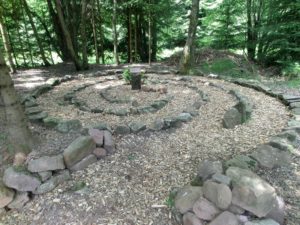 continues to teach and explore spirituality in all its forms. She never gave up on her Catholic background; it is braided into her spiritual practice. Her house is adorned with icons from an open acceptance of world spiritual traditions: Native American, Catholic, Buddhist, Hindu and a variety of indigenous religions. A feather for smudging sage lays on her fireside hearth, candles for devotional prayer line her shelves, Native American hoop drums sit in the corner, paintings of Mary, Our Lady of Guadalupe, and the Black Madonna hang on her walls. A medicine wheel is laid out in stones under a tree in her backyard. Then there’s the domed frame of a Lakota-style sweat lodge in her back yard because one of her dear friends needed a space to conduct sweat lodge ceremonies. Of course, Carol offered her yard.
continues to teach and explore spirituality in all its forms. She never gave up on her Catholic background; it is braided into her spiritual practice. Her house is adorned with icons from an open acceptance of world spiritual traditions: Native American, Catholic, Buddhist, Hindu and a variety of indigenous religions. A feather for smudging sage lays on her fireside hearth, candles for devotional prayer line her shelves, Native American hoop drums sit in the corner, paintings of Mary, Our Lady of Guadalupe, and the Black Madonna hang on her walls. A medicine wheel is laid out in stones under a tree in her backyard. Then there’s the domed frame of a Lakota-style sweat lodge in her back yard because one of her dear friends needed a space to conduct sweat lodge ceremonies. Of course, Carol offered her yard.
Her book, The Lion of God: Archangel Ari’El, Personal Encounters, was released in February of 2017. To learn more about Carol and her practices, visit 89hartford.org.
